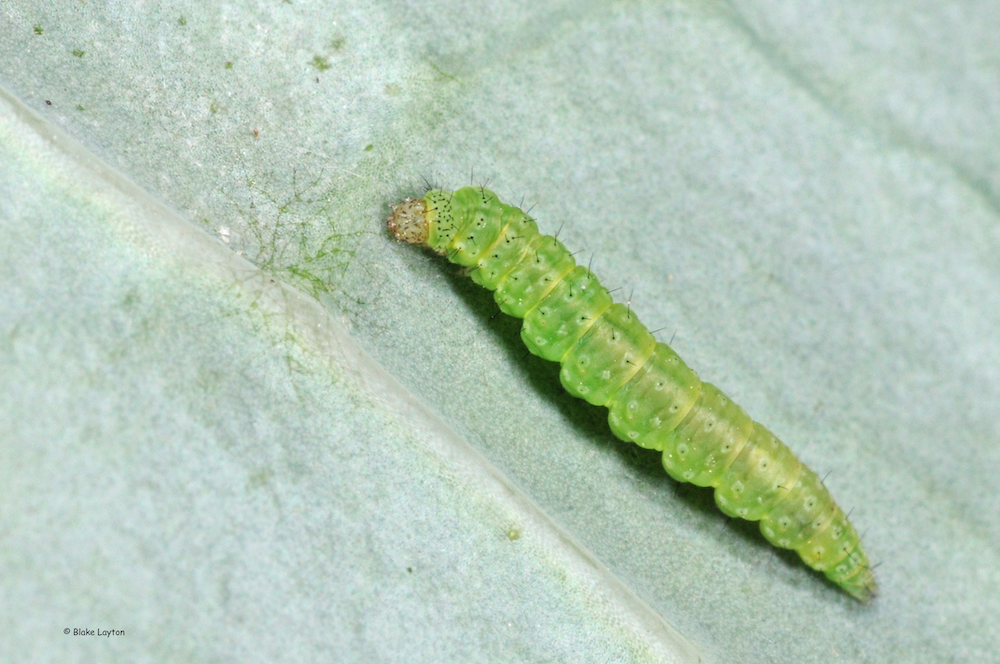Diamondback Moth, Vol. 7, No. 26
Plutella xylostella
Order: Lepidoptera
Family: Plutellidae
Looking forward to enjoying some nice greens from your fall vegetable garden? Be aware of diamondback moth and other caterpillar pests. They also like leafy brassicas. Diamondback moth is one of several species of caterpillars that damage brassica crops in fall vegetable gardens. Others include cabbage loopers, armyworms, cross-striped cabbageworm and imported cabbageworm. Diamondback moth is the smallest of the group, with mature caterpillars reaching only ½ inch long. But this little caterpillar is an important worldwide pest and if you can find and control diamondback moth, you will probably control the other larger species as well.
What plants does diamondback moth attack? Plants in the brassica family (formerly known as crucifers). This includes cabbage, turnips, mustard, bok choy, collards, broccoli, and many others, including many weeds belonging to this family. Diamondback moths do not attack non-brassica leafy greens like lettuce or spinach but, like many gardeners, they prefer some brassica over others. Collards, Chinese cabbage and bok choy are especially preferred, but when populations are high, few brassicas are off limits.
Adult moths are small slender little moths, only about 1/2 inch long, with long thin antennae. The wings are brown, with a lighter colored row of diamond shapes running down the center of the back of resting moths. The caterpillars are light green with no noteworthy markings. They often pupate on the leaves, forming 1/3-inch-long net-like cocoons, with the developing pupa visible inside.
Control: Spinosad is the best treatment for caterpillar pests on fall and spring brassica crops in home gardens. Spinosad works well on any caterpillar pest and also controls yellowmargined leaf beetles. Several companies sell formulations that contain 0.5% Spinosad. Fertilome, Bonide and Monterey are just three examples and some formulations of spinosad are even approved for organic production. The preharvest interval is only 1 day on most brassica crops, but always check the label before spraying. Fall crops tend to have more problems with caterpillar pests than spring crops. Check young plants a couple of times each week looking for feeding damage or insects. Spray as soon as you detect low populations. Don’t wait too late to spray. The goal of an insecticide treatment is to prevent excessive insect damage, not to get revenge.
See Extension Publication 2347, Insect Pests of the Home Vegetable Garden for more information on insect control in fall brassica and other vegetables.
See Bug's Eye View No. 3 of 2021 for more info on yellowmargined leaf beetle.
Blake Layton, Extension Entomology Specialist, Mississippi State University Extension Service.
The information given here is for educational purposes only. Always read and follow current label directions. Specific commercial products are mentioned as examples only and reference to specific products or trade names is made with the understanding that no discrimination is intended to other products that may also be suitable and appropriately labeled. Mississippi State University is an equal opportunity institution.
Bug’s Eye View is now on Facebook. Join the Bug's Eye View Facebook group here.


